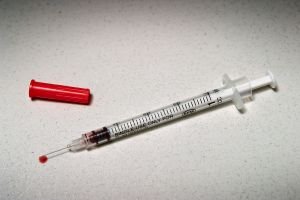New York, NY - May 13, 2014 - Attorney General Eric T. Schneiderman and Fernando Ferrer, Vice Chairman of the Metropolitan Transportation Authority (MTA), announced today that the MTA has joined the Attorney General’s Community Overdose Prevention (COP) Program, which uses criminal and civil forfeiture money to equip and train state and local officers in New York with naloxone, the extremely effective heroin antidote that can instantly reverse the effects of an opioid overdose.
The COP Program has agreed to provide the MTA with at least $40,000 for the purchase of 670 naloxone kits. Every police officer on the MTA force, which covers the Long Island Rail Road, Metro-North and the Staten Island Railway – in total, 14 counties in New York and Connecticut – will now carry the life-saving drug and be trained to administer it in a medical emergency.
Additionally, Attorney General Schneiderman announced that, in less than two months since the COP Program was launched on April 3rd, more than 100 law-enforcement agencies have applied to the COP Program, including at least one police department from every region in New York State. Several dozen more are in the process of completing the necessary steps in order to become eligible. Last week, the Guilderland Police Department became the first to receive reimbursement via the COP Program.
“The COP Program is an essential part of our effort to combat the spike in heroin overdoses that is plaguing communities and families across our state,” Attorney General Schneiderman said. “By providing every MTA police officer with naloxone kits, we are making this stunningly effective overdose antidote available on a major artery into New York City’s suburbs. This program will literally save lives, which is why I am pleased that one of the largest police departments in the State has agreed to participate in this critical program.”
“The MTA network spans 5,000 square miles from New York City to the farthest suburbs, and it’s a sad fact of life that heroin use is a growing problem that knows no boundaries,” Vice Chairman Ferrer said. “I want to thank Attorney General Schneiderman for helping to put a vital antidote into the hands of MTA Police officers around the clock, who will be ready as always to act quickly and save lives.”
“MTA Police officers are trained to handle emergencies from the busiest railroad stations to the farthest-flung tracks, and giving them the tools to handle a heroin overdose immediately is simply the right thing to do,” said MTA Police Chief Michael Coan. “This is an important way to reduce the human toll that heroin takes, and we’re glad to have these kits at the ready to help save lives.”
Each naloxone kit consists of a zip bag or pouch containing two prefilled syringes of naloxone, two atomizers for nasal administration, sterile gloves and a booklet on the use of the drug. The cost of a naloxone kit is approximately $60, and the shelf life of each kit is approximately two years.
The success of naloxone in combatting opioid overdoses cannot be overstated. Since the fall of 2010, the police department of Quincy, Massachusetts, the first department in the nation to require its officers to carry naloxone, has used the drug 221 times and successfully reversed 211 overdoses (as of February), a success rate of over 95%. In New York’s Suffolk County, 563 lives were saved last year alone.
Nassau County District Attorney and Co-Chair of Nassau County’s Heroin Prevention Task Force Kathleen Rice said, “There's no question that Attorney General Schneiderman’s COP Program will save lives, and the MTA Police Department’s participation will significantly expand the program’s reach. Together with pending legislation and local prevention measures taken by prosecutors and the medical community, we are all focused on preventing overdose tragedies in New York.”
Dr. Jeffrey L. Reynolds, Executive Director of the Long Island Council on Alcoholism & Drug Dependence (LICADD) and the Open Arms Employee Assistance Program, said, “Thanks to the Attorney General and the willingness of law enforcement to participate in his program, we will save lives and create new opportunities for families to experience the miracle of addiction recovery. We at LICADD continue to applaud the wide-ranging and tireless efforts of Attorney General Schneiderman in addressing our state's opiate crisis from multiple angles.”
Susan Salomone, co-founder of Drug Crisis in Our Backyard, said, “For too long, heroin has been flowing into our streets and into our homes. We need to use every tool in our arsenal to combat this deadly epidemic, and the Attorney General’s COP Program is a perfect example: It allows law-enforcement officers, often the first responders to a medical emergency, to be equipped with a life-saving antidote that gives people a second chance at life.”
Since taking office, Attorney General Schneiderman has been aggressive in combatting the scourge of heroin in New York. He led the effort to rein in prescription opioid abuse by creating I-STOP – the Internet System for Tracking Over-Prescribing. Initial figures indicate that I-STOP has reduced doctor-shopping – the practice of going from doctor to doctor to accumulate prescriptions – by 75% in just the first year. On the criminal side, I-STOP has led to the prosecution of several doctors who willingly participated in doctor-shopping.
Separately, the Attorney General’s Organized Crime Task Force has successfully dismantled a number of heroin rings around the state. Most recently, OCTF secured nine convictions related to its takedown of a home-grown, Albany-based street gang called the Original Gangsta Killas.










